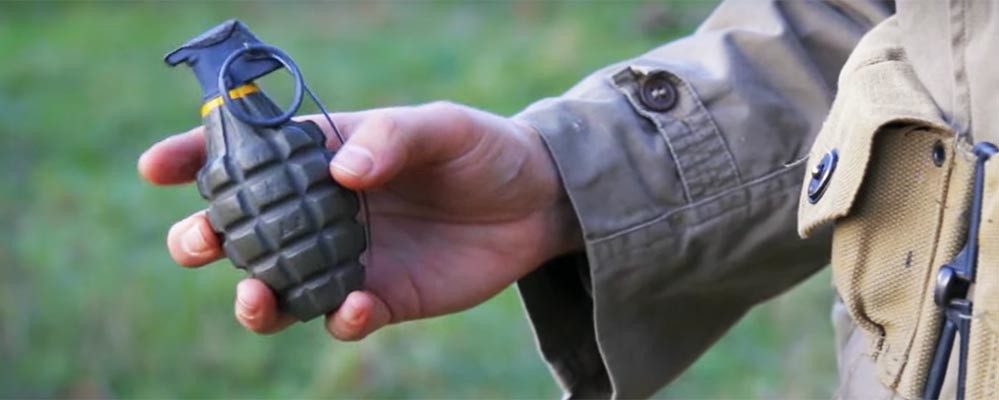The history and operation of the famous Mk 2 grenade of World War II
Among the best known weapons of the greatest war humanity has suffered were not only pistols, rifles and machine guns, but also hand grenades.
One of the most easily recognizable was the Stielhandgranate Model 24, introduced in 1915 and used by the Germans in both world wars, and which is famous for including a wooden handle that allowed it to be thrown from a greater distance. On the Allied side, perhaps the most famous hand grenade was the Mk 2, introduced into the US Army in 1918 but not in time to be used in World War I, and which continued to be used by American soldiers until the Vietnam War.

The Mk 2 was characterized by its pineapple-shaped design, an appearance that was due to the fact that the surface of the grenade was divided by channels that formed a total of 40 protuberances, divided into 8 columns and 5 rows. The objective of this design was not aesthetic: when the explosive contained in the grenade was detonated by its fuze, those 40 protuberances turned into metallic fragments that were shot in all directions, also in that of the launcher of the grenade, so he had to take shelter as soon as it was thrown. This characteristic made this grenade an effective anti-personnel weapon for mainly defensive purposes.
The always interesting Youtube channel Tropa Guripa has published a very good video explaining in detail the history and operation of this grenade, showing two replicas sold on the Internet by the WW2 store Gear from Lyon, France, specializing in WWII accessories (the video is in Spanish, you can activate the English subtitles in the bottom bar of the player):
|
Don't miss the news and content that interest you. Receive the free daily newsletter in your email: |
- Most read
- The 'hole' without civil flights around Paris during the opening of the Olympic Games
- Stunning footage of the F-15QA Ababil in flight recorded from its cockpit
- The firearms used by the Pontifical Swiss Guard, the smallest army in the world
- The most distant deployment of the Spanish Air Force in Australia and New Zealand
- Eurofighter vs F-35: the opinions of professional pilots on these advanced fighters
- The first photo of an F-16 fighter with Ukrainian insignia and the details it has revealed
- This is the driver station of an M1 Abrams tank and the impressive start of its engine

 ES
ES







Opina sobre esta entrada: